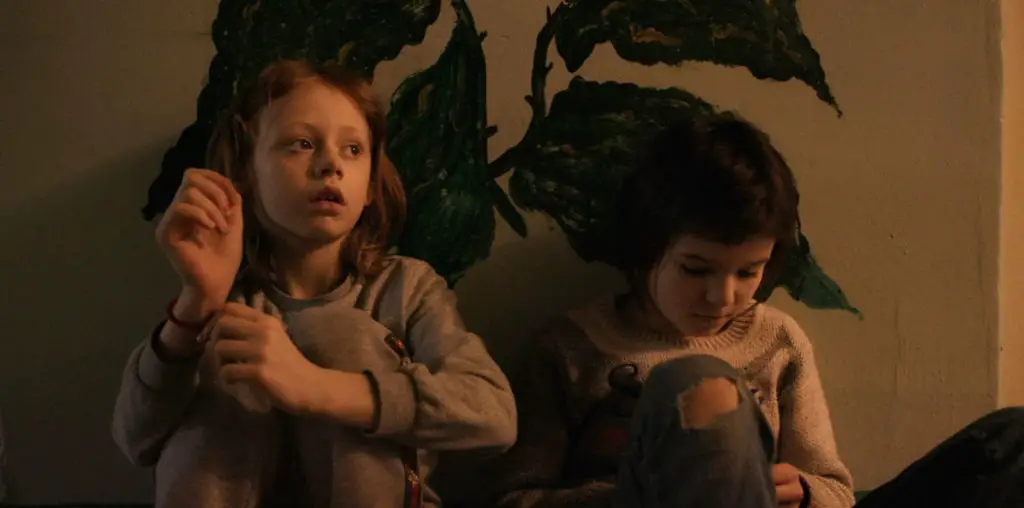
NOW IN THEATERS! Spirals of representation and exploitation swirl together in a seething pinwheel in directors Lisa Akoka and Romane Gueret’s feature The Worst Ones (Les pires). A film crew is shooting a gritty youth drama in the Picasso housing project in North France. The director, Gabriel (Johan Heldenbergh), wants authenticity, so he casts residents of the ghetto instead of using professional actors, including the child leads. His young assistant Melodie (Angelique Gernez) is helping wrangle all the teens being considered.
Jessy (Loic Pech), the 17-year-old male lead, served a three-month sentence in a reformatory. Lilly (Mallory Wanecque) is playing the pregnant teen and has a bad reputation at her school. She is crushing hard on the sound man Victor (Matthias Jacquin). Her little brother is played by Ryan (Timeo Mahaut), a troubled child looked after by his big sister, Judith (Esther Archambault). The boy says he never cries, but he feels angry to the point that his body always shakes. A lot of pressure is due to his mother (Fabienne Dufour), who has been absent due to mental issues and is trying to regain custody. Gabriel wants to catch this anger on camera. He encourages Ryan to use his own words instead of the written dialogue, especially when the boy is meant to curse and scream insults.
Maylis (Melina Vanderplancke), a hip-hop tomboy, reluctantly participates in the production. She confronts the director about his casting choices, as he auditioned hundreds but only picked the worst ones. Soon other Picasso neighborhood residents start questioning how the filmmakers are portraying where they live. Who are the real worst ones?

“…Picasso neighborhood residents start questioning how the filmmakers are portraying where they live.”
The script for The Worst Ones was written by Akoka, Gueret, and Elenore Gurrey, in collaboration with Catherine Paille. The writing is simple in the most complex way imaginable, unraveling mysteries throughout. Each thread acts like a separate, little black hole, drawing our attention in. This leaves the audience clutching their armrests through strong suggestions instead of outright exposition. This makes the drama easy to comprehend and gives it a greater depth beneath its surface.
The cinema verite shooting by Eric Dumont is remarkable. The cinematography transmits realism more refinedly than usual. Missing is the sloppiness that is normally part and parcel with handheld filming. The camera doesn’t so much shake as glide. The natural movements the frame makes to keep things off-guard resemble the peacefulness found on the ground in a forest. This framing adds authenticity to the raw power of the performances of the young talent. I didn’t see any previous credits for the leads, so there are already parallels between first-time actors playing first-time actors in the movie within the movie.
There is a self-referential wildfire that spreads across the running time of The Worst Ones. However, instead of consuming the narrative, this fire bakes into a crispy, juicy feast of reflection. When trying to represent the untold stories of desperation, there is the danger of drifting into “poverty porn” by highlighting the blight over humanity. Akoka and Gueret are able to comment on such without replicating it themselves. There is a permanent shadow across the intentions of Heldenbergh’s character that maintains a constant creepiness without ballooning into obvious villainy.
The Worst Ones makes clear over and over again how Gabriel is harvesting the real-life pain of these children for self-glory. But then the story goes into other matters that complicate things further, which is glorious. The motion picture, not the one being made throughout the narrative, is a fascinating look at expectations and how others see our community and us.

"…a fascinating look at expectations and how others see our community and us."


